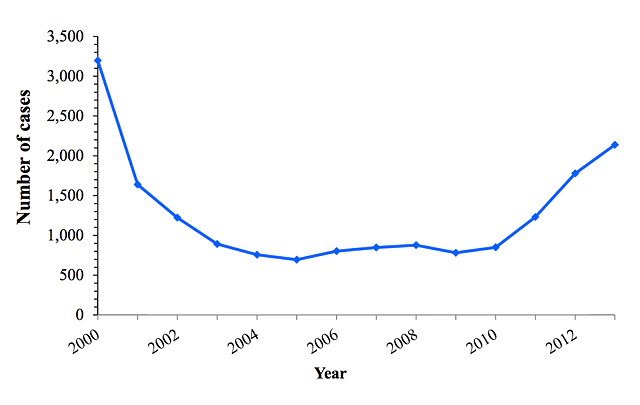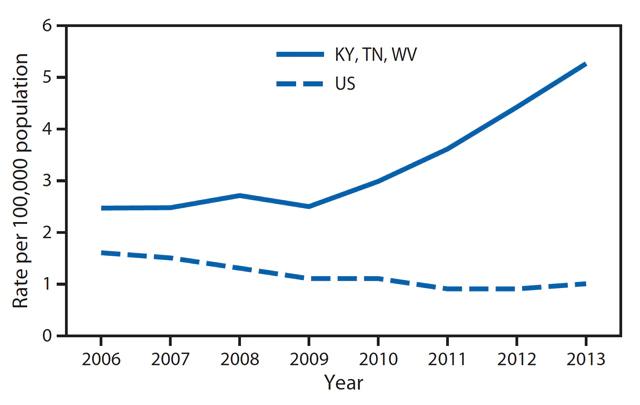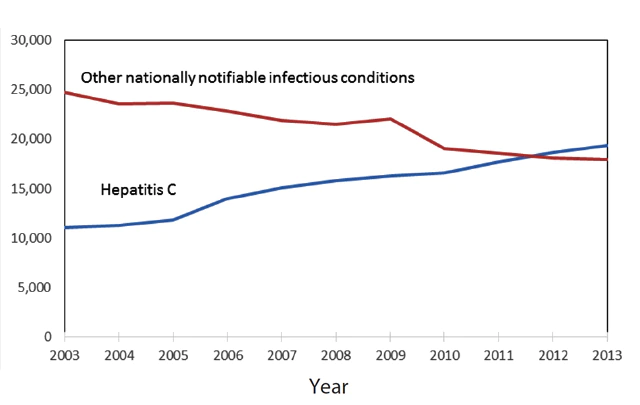Millions of Americans from all walks of life are living with viral hepatitis, and most don’t know they have the virus.
- 2.4 million people are estimated to be living with hepatitis C in the United States. The actual number may be as high as 4.7 million or as low as 2.5 million.1
- 850,000 people in the U.S. are estimated to be living with hepatitis B. The actual number may be as high as 2.2 million or as low as 730,000.2
- More than half of persons living with hepatitis do not know that they have the virus. Thus, they are at risk for life threatening liver disease and cancer and unknowingly transmitting the virus to others.
- 67% of persons living with hepatitis B infection do not know they have the virus.
- 51% of persons living with hepatitis C infection do not know they have the virus.
- In 2018:
- Millennials (most adults in their 20s and 30s) made up 36.5% of newly reported chronic hepatitis C infections.
- Baby boomers (most adults in their mid-50s to early 70s) made up 36.3% of newly reported chronic hepatitis C infections.
- Generation X (adults in their late 30s to early 50s) made up 23.1% of newly reported chronic hepatitis C infections.
- Asian Americans and Pacific Islanders are the racial/ethnic groups that are most heavily affected by hepatitis B virus. Asian Americans and Pacific Islanders represent about 5% of the U.S. population, but they represent about half of all persons living with hepatitis B. As a result, 1 in 12 Asian Americans and Pacific Islanders are living with hepatitis B.
Hepatitis C infections are increasing in the United States.
- Acute hepatitis C infections increased 250% from 2010 to 2014.

- The rate of new hepatitis C infections reported to CDC in 2018 was four times as high as it was in 2010.
- 2018 marked a decade of increases in new hepatitis C infections among people in their 20s and 30s, with injection drug use as the primary route of transmission.
- Acute hepatitis C infections increased 364% from 2006 to 2012 in four states affected by the opioid epidemic (Kentucky, Tennessee, Virginia, and West Virginia).
Increases in hepatitis B infections are being fueled by the opioid and heroin use epidemics that are gripping many communities across the United States.
- After decades of declines in new cases, progress on hepatitis B prevention has stalled in the US as a whole and, in some states, hepatitis B infections have increased.
- Acute hepatitis B infections increased 114% from 2006 to 2013 in three states affected by the opioid epidemic (Kentucky, Tennessee and West Virginia).

Hepatitis B and C are responsible for increasing rates of liver cancer and premature deaths.
- Viral hepatitis is a leading cause of liver cancer.
- Unlike other types of cancers, rates of liver cancer have been increasing in the United States.
- Rates of new liver cancer cases increased 38% from 2003 to 2012.3
- Liver-cancer related death rates are increasing. Almost 23,000 people died from liver cancer in 2012. This is a 56% increase in deaths since 2003.
- More men die from liver cancer, but rates are increasing more quickly among women. From 2008 to 2012, the liver cancer-related death rate increased by an average 2.8% per year among men and 3.4% per year among women.
- Since 2012, there have been more deaths due to hepatitis C than all 60 of the other reportable infectious diseases combined.

------
1 http://www.ncbi.nlm.nih.gov/pubmed/26171595
2 http://onlinelibrary.wiley.com.ezproxyhhs.nihlibrary.nih.gov/doi/10.1002/hep.28109/epdf Roberts et al
3 http://www.cdc.gov/cancer/dcpc/research/articles/arn_7512.htm

